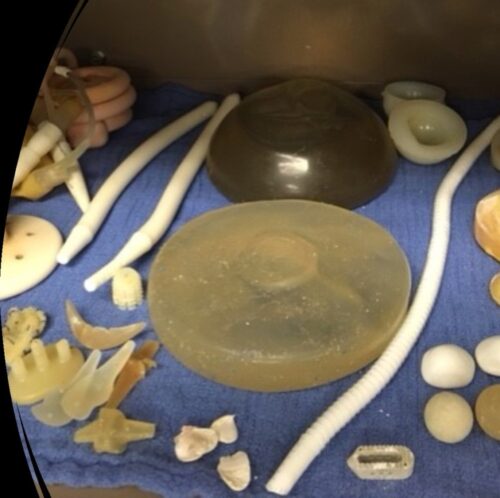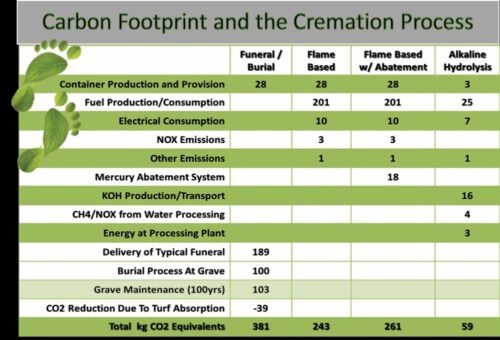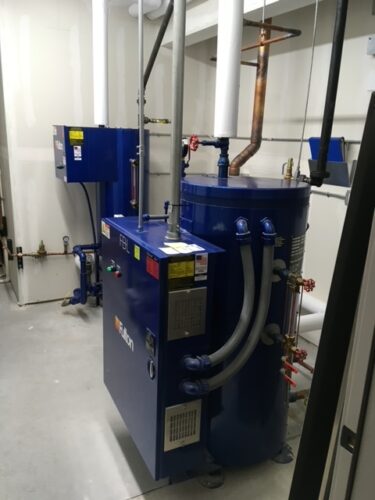UC Davis Body Donation Program Moves to Water Cremations to Protect Environment
By Fiona Raymond-Cox
frc@mahfan.net
As part of its Body Donation Program, the University of California, Davis is building a water cremation facility to sustainably dispose of bodies that are received by the School of Medicine. The new fit-for-purpose facility is part of the university’s $620 million Aggie Square development proposed to open on Dec. 15, 2024. Expected to be fully operational in the Summer of 2025, the facility and the whole development are targeted to be LEED Silver-certified following the UC system standards.
Water cremation, also known as alkaline hydrolysis and green cremation, “falls right into that environmentally sensitive, forward-thinking aspect that the UC system brings,” said Aron R. Davis, director of the UC Davis Body Donation Program.
UC Davis is one of six UC campuses where the public can sign up to leave their bodies to science when they die. These body donation programs allow first-year medical students the opportunity to dissect and learn from the bodies donated as part of their early education to become doctors. Mr. Davis expects the program to receive 600 bodies per year, but noted that they could add worker shifts to accommodate more. Once the bodies are no longer needed, they require disposal.

“Our bodies are full of plastic, metals and think of some of the dental work with mercury and other toxic chemicals that if burned can enter the atmosphere,” Mr. Davis said.
Reducing its environmental impact has been the key driver in the evolution of the UC Davis Body Donation Program. Currently the program contracts with an outside agency to transport the donor bodies for cremation.
According to the Environmental Protection Agency (EPA), a gallon of gasoline burned creates about 8,887 grams of carbon dioxide (CO2). According to National Geographic, one single-flame cremation creates an estimated 534 lbs of CO2. Reuters puts this number at 800lbs.
In contrast, water cremation is carbon neutral. Further, the likes of metal and breast implants, joints, hernia mesh, polymethyl methacrylate (PMMA) (also known as bone cement used to hold implants in place), and mercury found in teeth – all of which are harmful to the environment – can be recovered and recycled or sent to a refinery. Prosthetics made from poly carbons will need to be disposed of as biohazardous waste and taken off campus with other medical waste by a licensed disposal company.
Mr. Davis, who learned about the “amazing” technology of natural water cremations 10 years ago, proposed the method for the Body Donation Program. But UC Davis is not alone. University of California, Los Angeles has been operating a similar facility since 2010. Travis G. Seims, assistant director of the UCLA Donated Body Program, said that when they wanted their own form of body disposition, “This was really the only viable option, particularly since UCLA has a green initiative,” he said. “Our footprint is about four times less than that of flame cremation.”
Working with Mr. Seims and his other counterparts at UCLA, Mr. Davis has been able to leverage the lessons learned, including statistics and research. “We use about 400 gallons of water depending on the size of the body,” Mr. Seims said. Once used, the water is returned to the wastewater treatment facility. When the original equipment was installed, the City of Los Angeles needed to be satisfied that pathogens would be destroyed and the water safe for use before it entered the wastewater system.
“We all get up in the morning. We go to the bathroom. We cut ourselves shaving,” Mr. Seims said. Any one of us might have “an infectious disease such as Covid, Tuberculosis, Hep C, HIV. You know all that is going into the same treatment area. The funny thing is, that what we’re sending there is sterile,” he continued, referring to the quality of the wastewater once the donated bodies have been treated via the water cremation process.
UCLA undertook stringent testing to satisfy the state water authority and City of Los Angeles. “We tested 30 times in 30 months before the permit was issued and nothing was found,” said Dean Fisher, retired director of both the Mayo Clinic’s Anatomical Bequest Program in Rochester, Minnesota (1988-2008) and the UCLA Donated Body Program (2008-2021). UCLA is still required to submit regular test data to the California Department of Public Health. Mr. Davis expects to go through similar testing to demonstrate to the City of Sacramento that the UC Davis equipment runs appropriately, and pathogens are destroyed.
Several companies supply alkaline hydrolysis machines. Mr. Fisher worked with scientists, engineers, doctors, infection control and water specialists to select and implement Resomation LTD’s Resomator – the machine used to facilitate water cremations – at both locations. Originally concerned about having control over how to appropriately care for and ultimately dispose of the donated body, he said, “All of these wonderful attributes came along as we started to run,” referring to the environmental benefits.
Mr. Davis visited the Mayo Clinic and UCLA as well as an operation in Kent, Washington to help inform the layout of the UC Davis facility. The campus Facilities and Planning Department is working with a Resomation LTD engineer to plan the UC Davis facility. Mindful of its carbon footprint, UC Davis will install an electric generator to create the steam necessary to operate the Resomator. Given its size, the facility’s walls cannot go up until the Resomator is installed.
UC Davis’ bio cremation room will have a single Resomator plus a supporting sled of equipment to hold chemicals. The machine is like a tube; it is cylindrical in shape. The donor body is wrapped in organic material, either cornstarch or silk, so the material breaks down in the process. The donated body is placed on a tray that slides into the Resomator, which weighs the body and adds the right mixture of water and chemical (approximately 95% water to 5-8% of an alkaline solution (potassium hydroxide also known as caustic potash)).

“We describe it like a whirlpool bath,” Mr. Seims said. A recirculation pump runs throughout the process to keep the fluids circulating around the body to break up the molecules. Steam is run through the Resomator to heat it up to above 300 degrees for over an hour. Mr. Seims said, “Pathogen destruction inside the unit is 60,000 times greater than an autoclave,” which is used to sterilize medical and other instruments.
When the unit needs to be cooled, cold water is run through a coil mechanism to bring the temperature down. That water can be retained in a storage tank for reuse. However, the water inside the unit is safe to be discharged into the public utility waste stream once it has cooled. The solid remains are rinsed and dried before being removed from the Resomator.
“The way we’ve described it before is if you died out in the middle of the desert versus died up in the Sierra mountains, the decomposition of your body would be different depending on the elements, but decomposition will take place,” Mr. Seims said. “All we’re doing is taking the body’s natural decomposition process and we’re speeding it up from, you know, days, weeks and months or years to a matter of hours.”
Safety has been a major consideration in planning and operating the Resomator. The latest Resomation LTD technology allows for remote monitoring and

will send alerts if a problem arises. This means that the UC Davis team and Resomation LTD staff can be informed of a problem, and a technician can be dispatched as necessary. Retaining chemicals in the same room avoids the need to pump them from another floor. The new equipment can be run by a single person. “A dishwasher is harder to run,” Mr. Seims said.
The UC Davis Body Donation Program was created in 1969 along with the School of Medicine to supply specimens for the Anatomy program but it now falls under the School of Medicine. In addition to serving anatomy course students, it has grown to serve the School of Nursing and other groups within the UC system that include Surgery, Emergency Medicine and Orthopedics. Whole cadavers or body parts are loaned for education research at California State University Sacramento, Chico and Cal Poly Humboldt, as well as to community colleges, the US military, Air Force, Fire Department, Office of Emergency Services and paramedic groups, and they are returned after use.
UC Davis will be the second UC campus to have an alkaline hydrolysis machine. It will serve both UC Davis and University of California, San Francisco due to space constraints at the urban campus. There are no plans to change University of California, San Diego and University of California, Irvine’s flame cremation process.
UCLA’s annual memorial service for body donors’ families is funded by its water cremation recycling efforts. UC Davis and UCSF expect to do the same.
Regardless of water or flame cremation, the UC Body Donation Program does not return the remains of its body donors. Instead, they are broken down to create ash. Water cremation creates a pure white calcium phosphate ash. All ashes are scattered at sea.
“For me it’s a dream,” Mr. Davis said of the forthcoming water cremation facility at UC Davis. “Having a lab but also to be on the cutting edge of technology. With climate change this is a better way going forward.”
